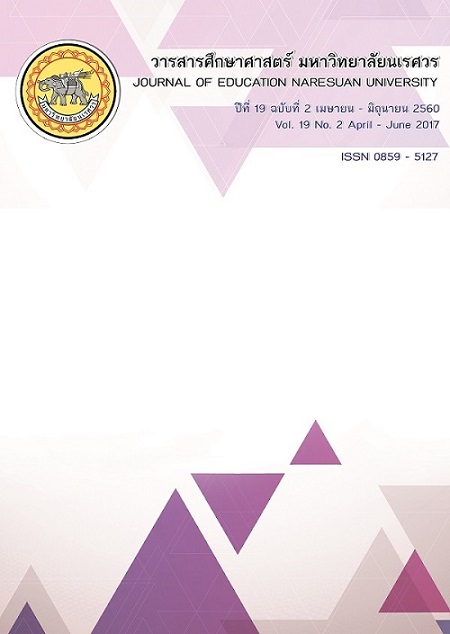การพัฒนากลยุทธ์การบริหารจัดการโรงเรียนในพื้นที่ภูเขาสูงและชายขอบภูมิภาคตะวันตก สังกัดสำนักงานเขตพื้นที่การศึกษาประถมศึกษา จังหวัดตาก
Main Article Content
Abstract
การวิจัยครั้งนี้มีวัตถุประสงค์เพื่อ 1) ศึกษาสภาพ ปัญหา และปัจจัยที่เกี่ยวข้องกับการบริหารจัดการโรงเรียนในพื้นที่ภูเขาสูงและชายขอบภูมิภาคตะวันตก สังกัดสำนักงานเขตพื้นที่การศึกษาประถมศึกษา จังหวัดตาก 2) พัฒนากลยุทธ์การบริหารจัดการโรงเรียนในพื้นที่ภูเขาสูงและชายขอบภูมิภาคตะวันตก สังกัดสำนักงานเขตพื้นที่การศึกษาประถมศึกษา จังหวัดตาก 3) ประเมินผลการใช้กลยุทธ์การบริหารจัดการโรงเรียนในพื้นที่ภูเขาสูงและชายขอบภูมิภาคตะวันตก สังกัดสำนักงานเขตพื้นที่การศึกษาประถมศึกษาจังหวัดตาก ดำเนินการเก็บรวบรวมข้อมูลโดยการวิเคราะห์เอกสาร ใช้แบบสอบถาม การสัมภาษณ์ การประชุมเชิงปฏิบัติการ การสัมมนาอิงผู้เชี่ยวชาญ และใช้แบบประเมินผลการใช้กลยุทธ์ วิเคราะห์ข้อมูลโดยหาค่าร้อยละ ค่าเฉลี่ย ค่าส่วนเบี่ยงเบนมาตรฐาน และการวิเคราะห์เนื้อหา
ผลการวิจัย พบว่า
1. สภาพ ปัญหา และปัจจัยที่เกี่ยวข้องกับการบริหารจัดการโรงเรียนในพื้นที่ภูเขาสูงและชายขอบภูมิภาคตะวันตก สังกัดสำนักงานเขตพื้นที่การศึกษาประถมศึกษา จังหวัดตาก สรุปผลได้ ดังนี้
1.1 สภาพการบริหารจัดการ พบว่า โรงเรียนจัดการศึกษาให้เด็กทุกกลุ่มชาติพันธุ์ทั้งที่มีเอกสารทางทะเบียนราษฎร์ และไม่มีเอกสารทะเบียนราษฎร์หรือไม่มีสัญชาติไทย โดยไม่เลือกว่าเป็นต่างด้าว ชาวไทยภูเขาผู้พลัดถิ่นสัญชาติเมียนมาร์ เด็กยากไร้ และเด็กที่อาศัยอยู่ตามชายขอบของประเทศ
1.2 ปัญหาการบริหารจัดการ พบว่า การเกณฑ์เด็กเข้าเรียนตามแนวชายแดนมีจำนวนไม่แน่นอน อัตรานักเรียนออกกลางคันสูง การขาดแคลนครูผู้สอนที่ปฏิบัติงานในพื้นที่ชายแดน การส่งเสริมการจัดกิจกรรมด้านภูมิปัญญาท้องถิ่นที่สอดคล้องกับวิถีชีวิตไม่เป็นระบบอย่างต่อเนื่อง
1.3 ปัจจัยที่เกี่ยวข้อง พบว่า ปัจจัยภายใน ด้านจุดแข็ง ผู้บริหารและครูผู้สอนได้รับการยอมรับจากชุมชนและหน่วยงานในพื้นที่ โรงเรียนเป็นศูนย์กลางการจัดกิจกรรมศิลปะ วัฒนธรรม ประเพณีของชุมชน ด้านจุดอ่อนที่พบ คือ ครูผู้สอนมีการบรรจุ แต่งตั้ง โยกย้ายอยู่ตลอด นักเรียนที่เข้าเรียนมาจากหลากหลายชาติพันธุ์ทั้งที่มีหลักฐาน และไม่มีหลักฐานทางทะเบียนราษฎร์หรือไม่มีสัญชาติไทย ปัจจัยภายนอก ด้านโอกาส พบว่า ชุมชนในพื้นที่เป็นแหล่งเรียนรู้ทางวัฒนธรรม ภูมิปัญญาท้องถิ่นและวิถีชีวิตที่เป็นเอกลักษณ์ของชุมชน ด้านอุปสรรคที่พบ คือ ประชาชนอาศัยอยู่ไม่เป็นหลักแหล่ง ผู้ปกครองเคลื่อนย้ายถิ่นฐานระหว่างประเทศบ่อยๆ
2. กลยุทธ์การบริหารจัดการโรงเรียนในพื้นที่ภูเขาสูงและชายขอบภูมิภาคตะวันตก สังกัดสำนักงานเขตพื้นที่การศึกษาประถมศึกษา จังหวัดตาก ที่พัฒนาขึ้น ประกอบด้วย 1 วิสัยทัศน์ 3 พันธกิจ 3 เป้าประสงค์ 3 ประเด็นกลยุทธ์ 9 กลยุทธ์ 15 ตัวชี้วัด และ 24 มาตรการ
3. ผลการประเมินการใช้กลยุทธ์ที่เลือกมาทดลอง 3 กลยุทธ์ โดยประเมินผลการใช้กลยุทธ์ตามตัวชี้วัดของกลยุทธ์ พบว่า ผู้เรียนทุกกลุ่มชาติพันธุ์ได้รับการพัฒนาด้านคุณลักษณะบนพื้นฐานความมั่นคงของชาติ ผู้เรียนอนุรักษ์ศิลปะ วัฒนธรรม ประเพณี และภูมิปัญญาท้องถิ่นของชนเผ่าตามชาติพันธุ์ ผู้ปกครองนักเรียนมีความพึงพอใจในการมีส่วนร่วมในการจัดการศึกษา และผู้เรียนมีความตระหนักในการอนุรักษ์ศิลปะ วัฒนธรรม ประเพณี และภูมิปัญญาท้องถิ่นของชนเผ่าตามชาติพันธุ์อยู่ในระดับมาก
DEVELOPMENT OF SCHOOL ADMINISTRATIVE STRATEGIES OF SCHOOLS LOCATED IN THE MOUNTAINOUS AREAS AND WESTERN BORDERED REGION UNDER THE OFFICE OF PRIMARY EDUCATION IN TAK
The purposes of this research were: 1) to study states, problems and factors related to administration of schools located in the mountainous areas and western bordered region under the office of primary education in Tak, 2) to develop the administrative strategies, and 3) to evaluate the implementation of the strategies. The data was collected through the use of document analysis, questionnaires, interviews, workshops, connoisseurship, and evaluation forms. The data then was analyzed by using mean, standard division, and content analysis.
The results revealed that;
1. The states, problems and factors related to administration of schools were concluded as follows:
1.1 The states of school administration revealed that the schools offered education to all ethnic groups, who had civil registry documents, who did not have civil registry documents, or who did not have Thai nationality. No matter they were aliens, hill tribe people, displaced Burmese nationals, poor children, and the children living in the bordered region.
1.2 The problems of administration revealed that the number of the students enrolled form the bordered region were uncertain; the rate of dropout students was high, there was a lack of teachers, promotions of local wisdom activities relevant to way of live were discontinuously managed.
1.3 The factors related to the school management revealed that for the strengths, the school administrators and teachers were accepted from the community and organizations nearby the schools. The schools served as the center of artistic, and cultural, traditional activity. For the weaknesses, the teacher mobility and transfer were always happened. The students were from various ethnic groups. For the opportunity, the local community served as the learning resource of culture, local wisdom, and unique way of life. For the threat, people were unsettled, they often moved from place to place.
2. The strategies consisted of 1 vision, 3 missions, 3 goals, 3 strategic issues, 9 strategies, 15 indicators, and 24 measures.
3. The evaluation of the implementation of the 3 chosen strategies according the indicators revealed that students from all ethnic groups were development based on the national security. The students involved in art, cultural, traditional, local wisdom conservation according to their ethnicity. The parents were satisfied with involving in education administration and the students were aware of conservation of art, culture, tradition, local wisdom according to their ethnicity at a high level.
Article Details
The owner of the article does not copy or violate any of its copyright. If any copyright infringement occurs or prosecution, in any case, the Editorial Board is not involved in all the rights to the owner of the article to be performed.


